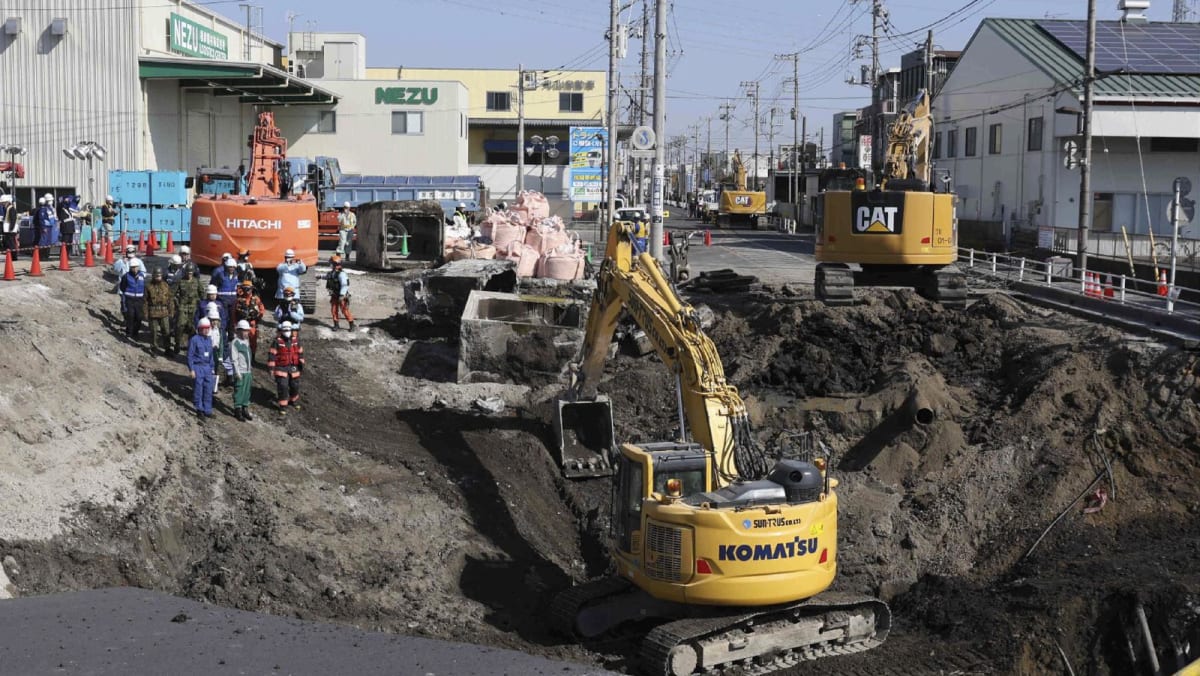AGEING PIPES
Initially, the hole was around 5m in diameter, then a much larger cavity opened nearby and the two holes merged.
To reduce the volume of sewage, locals were urged to “use as little water as possible” for three hours on Tuesday afternoon.
This was on top of requests already issued for about 1.2 million people in Saitama to refrain from non-essential use of water, such as taking baths or doing laundry.
In response, some onsens have opened their public bath facilities for free to accommodate residents in Yashio and nearby areas, according to local media.
The week-long sinkhole saga was a reminder of the insidious corrosion gnawing at Japan’s ageing water and sewerage pipes, Shinya Inazumi, a professor of geotechnical engineering at Shibaura Institute of Technology, told AFP.
The majority of the underground infrastructure was developed during the country’s rapid post-war economic growth.
“Many sewerage pipes in Japan have already outlived their service life (of 50 years) so pipes anywhere else could break due to ageing,” Inazumi said.
In just over 15 years’ time, 40 per cent of Japan’s sewerage pipes will have exceeded their lifespan, according to an estimate from the land ministry.
In Yashio, local authorities attributed the initial chasm to rusty, punctured sewerage pipes that absorbed the surrounding soil, creating a hollow under the ground.
Extreme weather events such as intense rain – made more frequent by climate change – can also exacerbate this kind of infrastructure failure, Inazumi said.
“Rainfall these days can be extremely heavy and localised, which means a great amount of water seeps underground,” the professor said.
“The water gushes in at an incredible speed, accelerating the growth of an underground hollow by making it bigger and bigger through erosion.”
